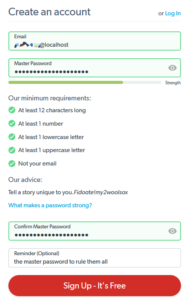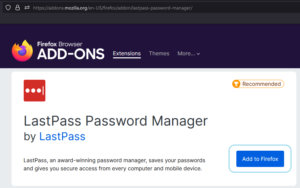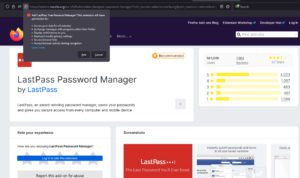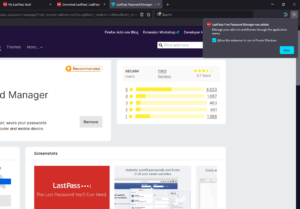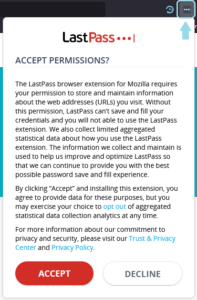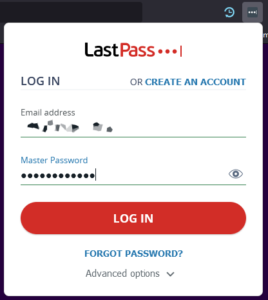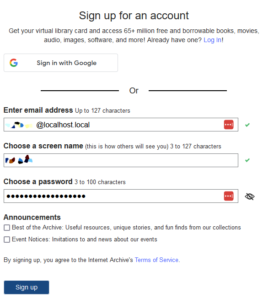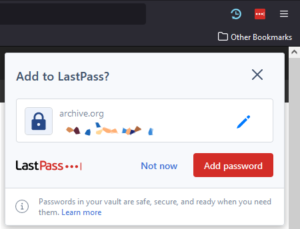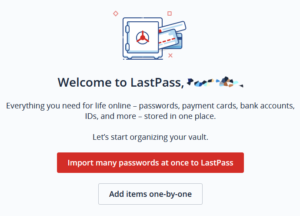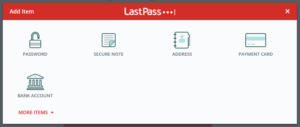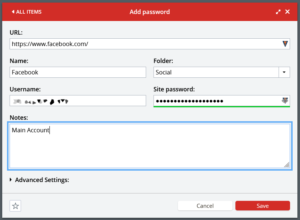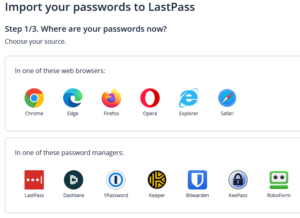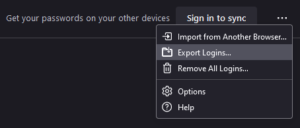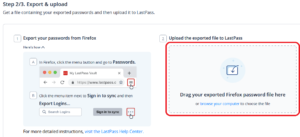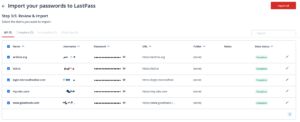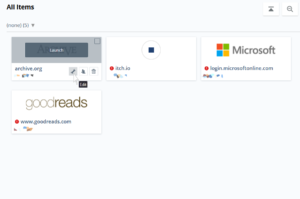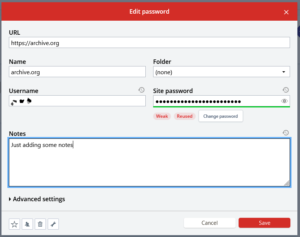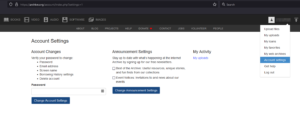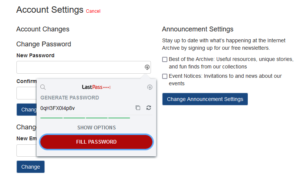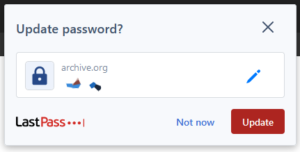How to Use LastPass in 2022 [Save and Manage Your Passwords]
LastPass is a strong freemium contender in a crowded password manager field, and its capable free version means you can test LastPass password manager without committing or sacrificing key features. This article focuses on how to use LastPass, and we’ll describe how using its password vault can make online life easier and more secure.
Key Takeaways:
- The LastPass Free version is solid despite multi-device limitations; full features require a LastPass Premium or LastPass Family subscription.
- With LastPass, you can create and manage sensitive information with a web-based interface or the mobile app, all secured by one master password.
- On desktop, use the LastPass browser extension; otherwise, use the LastPass mobile app.
LastPass Free includes a credentials safe, password generator, secure notes and multi-factor authentication. There are limitations, though a trial of the Premium plan is available. We’ll cover the various plans, describing the differences between versions and tips for each (you can also read more about the service in our full LastPass review).
Then, we’ll have step-by-step instructions for signing up for a LastPass account, installing the software and saving existing passwords. We’ll also go over how to save personal information, manage data and generate more secure passwords.
-
LastPass stores and autofills site credentials from an online database that synchronizes with browser extensions or a mobile app.
-
Create a new account and download the mobile app or browser extension, and then save information for your accounts.
Before We Explain How to Use LastPass
Let’s take a minute to get some basics out of the way. You have two options when signing up for an account: free or premium.
How different is LastPass Free from LastPass Premium? A critical difference is support across different device types. With LastPass Free, the manager only works on desktop or mobile, but not both at once.
It’s worth noting that this is specific to the automated fill capability. You can always open the website and copy your login credentials, but that drastically reduces the application’s ease of use.
With LastPass Premium, there’s multi-device autofill, secure data sharing, 1GB of encrypted file storage and a security dashboard with dark web monitoring. You don’t have to supply a credit card for the free 30-day trial, so use that to its fullest.
After that, LastPass Premium is $3 per month. Family plans are $4 per month and include a family manager dashboard, six encrypted vaults and unlimited shared folders.
If you want a business account, you can also get multifactor authentication — but you’ll have to inquire for pricing. Personal plans can be paired with two-factor authentication via LastPass Authenticator.
How to Sign Up for LastPass
To start, create a LastPass account. It’s an easy process and the steps can be performed on a computer, tablet or phone. All you need is a reliable internet connection throughout the process.
- Enter Your Details in the Registration Form
Next, enter your email and a strong master password (check our guide on how to create secure passwords for tips). Once finished, click “sign up — it’s free.”
How to Download LastPass
You can use LastPass immediately after creating your password manager account. Logging in reveals a control panel for managing all your credentials and security features. By itself, this amounts to having a very organized online notepad for sensitive data. For the real benefits, install the LastPass plugin or mobile app.
- Install the Extension
On desktop browsers, a page will load with a link to install the LastPass extension. The extension enables automations like the password autofill feature, payment card storage and multi-factor authentication. Click the “add to” button for your browser to continue.
- Confirm Permission Requirements
Next, you’ll see a pop-up display with permission requirements for the extension, as the app needs access to your data to enable autofill. Click “add/install” to continue.
- Enable Private Windows
In some cases, another pop-up will ask if you want to enable the extension in private windows. Click the “allow” box, then click “okay” to enable LastPass at all times.
- Accept Extension Permissions
A new icon will appear in the upper-right corner of your browser’s toolbar. Click the red three-dot LastPass icon to open an “accept permissions” dialog. Click the “accept” button.
- Log In to the LastPass Extension
With permissions accepted, click the red LastPass icon again and it will ask you to log in. Your installation is complete and LastPass is ready.
How to Use LastPass to Save Passwords & Personal Information
We’re all creating passwords for dozens of different sites. Perhaps you save credentials in your browser, or maybe you write them down. In any case, this is a good time to organize login information in a vault of encrypted data. Plus, putting user accounts in a password management tool allows for autocompletion.
There are three ways to get there:
- Save your passwords when logging in or creating an account.
- Manually add your passwords.
- Bulk import your passwords from your browser.
Save Passwords on Login or Account Creation
For the first method, you can save all of your logins over time by enabling the plugin and using the web as usual. This way, your credentials will be saved over time as you visit sites.
- Save Credentials on Login Pages
A straightforward way to save credentials is when logging in or registering. With a password manager, the app or browser extension will ask to save account details for every login. On pages with a password field, you’ll see the red LastPass icon — that’s a clickable button that opens options for autofill.
- Add Password After Login
After logging in to a site, LastPass will ask if you want to save your credentials. Just click “add password” and your credentials will be saved to the vault.
Input Passwords Manually
You’re not limited to adding credentials only when creating or logging in to accounts. Here’s how to manually add accounts for later use.
- Add Passwords From the LastPass Dashboard
To enter credentials individually, use the LastPass website. You can add login data individually with the “add items one-by-one” button or by clicking the round plus (+) button.
- Select the Data Type
Next, you’ll see a menu with selections like password, bank account and payment card. Click the “password” button. These steps also work for secure notes and addresses.
- Fill Out the Item’s Information
Next, you’ll see fields for the URL, name, username and password. For name, folder and notes, enter details that will help you organize your data. Otherwise, put the website URL, your username and your password (either manually or using LastPass’ suggestions) and click “save.”
Import Passwords From a Browser
Adding passwords on login can take a while, and adding them manually can be tedious. Instead, here’s how to store all your online accounts at once.
- Click to Import Many
Importing passwords to LastPass only takes a few clicks. From the main LastPass dashboard, click the button that says “import many passwords at once to LastPass.”
- Select a Browser or Document Type
The next screen shows choices for multiple browsers, password managers or even text documents. Click the icon that corresponds to the source you’re importing from.
- Go to the Old Password Manager’s Saved Logins
As an example, you can export all your passwords from Firefox by going to “settings,” clicking “privacy & security,” then scrolling down to and clicking the “saved logins” button.
- Export the Old Password Database
Click the three dots in the upper right and click “export logins.” You can select the logins you need to export or deselect duplicates. This step will be similar in other browsers.
- Drag the Exported Logins File Into LastPass
Back on LastPass, you should still be at the “export & upload” screen. The page has examples for exporting logins, and there’s a draggable area for uploading exported login files. Drag the file from your file explorer into this boxed-in location.
- Confirm the Loaded Data
LastPass loads your credentials and shows an import summary. Review the import and make modifications as needed. When everything looks good, click the red “import all” button. Now your passwords are available on any browser, or — with LastPass Premium — any device.
How to Manage LastPass Passwords & Personal Information
Credentials aside, most of us have other personal details to secure. Lockboxes or filing cabinets are secure, but an online vault means your data is accessible from anywhere, anytime. Here’s how to manage logins and personal information.
- Open the LastPass Vault
Log in to the web dashboard. By default, you’ll see a grid view of all your saved data.
- Hover Over an Item and Click Its Edit Icon
Hover your mouse over the item to manage it. Whether it’s a password or credit card, this will reveal additional icons. Click the wrench icon to edit its details.
- Modify the Item Details
A pop-up will show details for the selected item. Fill out these details, then click the red “save” button.
How to Use LastPass to Generate Passwords
Though it might be easier to remember, reusing the same password leads to insecure passwords. Luckily, a password management account means that you only have to remember one master password.
Website credentials can all be unique, which is great for password security. Plus, unique passwords will limit a hacker’s access to a single site. Password managers make this easier by providing a function to create strong passwords randomly. Here’s how to do just that.
- Open Your Account Settings
Go to a site that needs a new password. Find the site’s account settings and its “change password” feature. You can also use these steps when first registering accounts.
- Use a LastPass Suggested Password
At the “change password” field, click the red three-dot LastPass icon. You’ll see a “password suggestion” pop-up. Click the suggestion, and then click the site’s “update password” button to save your changes. Alternatively, click the LastPass icon in the browser’s upper-right corner and select “generate secure password” — which is much more simple than entering complex passwords by hand.
- Update the Vault
LastPass will ask you to update the password. Click the red “update” button to save the generated password to your vault.
Final Thoughts
So that’s our guide to using LastPass to record passwords, manage credentials and information, and create strong passwords. Though one of many similar tools, the LastPass vault is a good password management tool for both free and paid versions. Others worth looking into include 1Password, Dashlane and Bitwarden — our top three best password managers.
Do you believe password managers are necessary? Is it a needless complication as long as you store passwords somewhere in the cloud? Did you find this guide helpful? Let us know in the comments, and thank you for reading.

